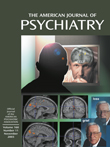After more than 50 years, the field of psychoneuroendocrinology remains vibrant, as indicated by a steady stream of new research findings and textbooks summarizing its advances. The editors of this volume, in their introduction, set it apart from other treatises by indicating its goal is “to show how the principles and emerging findings of psychoneuroendocrinology can inform modern clinical practice and lead to new breakthroughs in future practice.” The contributors were asked “to provide, where appropriate, clinical guidelines for the management of patients.” I reviewed this text with this clinical orientation in mind.
The editors have assembled authors of prominence who have contributed extensively to the psychoneuroendocrine research literature. There is reasonably inclusive coverage of topics, organized along standard endocrine-axis lines. The sections are Introduction, Peptide Hormones, Adrenocortical Hormones, Gonadal Hormones, Thyroid Hormones, Laboratory Testing, and Stress. Within each section there are one to four chapters. Many of the chapters emphasize clinical relevance; these mainly cover the psychiatric manifestations of primary endocrine disturbances (adrenal, thyroid, gonadal) and exogenous hormone administration. Endocrine treatments of psychiatric diseases, other than optimizing hormonal status in psychiatric patients with concomitant endocrinopathy, are generally more tenuous and thus get less coverage. I will highlight just a few chapters.
Following the editors’ introduction, Lindley and Schatzberg review the history of psychoneuroendocrinology from ancient times to the present. This is a daunting task, and although the authors touch on many interesting historical points, from ancient concepts through organotherapy to modern endocrinology, there are some important omissions. For example, although Geoffrey Harris is given rightful recognition for first providing evidence of hypothalamic factors that influence pituitary function, there is no mention of the two Nobel Laureates, Roger Guillemin and Andrew Schally, who initially isolated hypothalamic peptide hormones. Later parts of the chapter are imbalanced as well. For example, in a narrow section on hypothalamic-pituitary-adrenal (HPA) cortical activity in depression, the chapter authors and/or volume editors are cited 12 times. This historical review thus begins in an informative and balanced way but ends with a skew toward the authors’ own work.
Sack et al., in a relatively short but informative chapter updated from one published 7 years earlier, discuss the concept of chronobiology and melatonin as a “hormonal darkness signal” in humans. Administered before its endogenous nocturnal increase, melatonin advances the circadian clock; administered before its decline at the end of the nocturnal period, it retards the circadian clock. The use of melatonin in night-shift workers and to combat jet lag is discussed, as are its pharmacokinetics, safety profile, and the development of melatonin analogs. This chapter is nicely oriented toward clinical relevance.
Rothschild, one of the volume’s editors, discusses the HPA axis in relation to psychiatric illness. Curiously, the bulk of his chapter covers only the dexamethasone suppression test. This test is not in widespread use currently, although a number of investigators, including me, believe it has been shelved prematurely. The only other topic in Rothschild’s chapter is a short discussion of the treatment of depression with antiglucocorticoid drugs, e.g., cortisol synthesis inhibitors. These drugs have not been incorporated into clinical practice because they are only modestly effective, and generally only in the 30%–50% of depressed patients who have elevated HPA activity. Rothschild mentions the progesterone (and, at high concentrations, glucocorticoid) receptor antagonist mifepristone for treating psychotic depression. Mifepristone currently is approved for terminating early pregnancy. Notwithstanding the lack of confirmatory double-blind studies of its antidepressant efficacy, its limitation in treating depressed women of childbearing age is obvious, but this limitation is not discussed. Also troublesome is Rothschild’s undisclosed financial interest in Corcept Therapeutics, which is attempting to establish mifepristone as an antidepressant. As one of the editors of this volume, Rothschild had the opportunity to set a standard for disclosing financial conflicts of interest in book chapters, but he did not do so.
The chapters on gonadal hormones are particularly well integrated, covering menstrual-cycle-related and perimenopausal affective disorders (Rubinow and Schmidt), postpartum psychiatric disorders (Weinstock and Cohen), psychotropic effects of gonadal steroids in women (Halbreich et al.), and psychiatric effects of anabolic-androgenic steroids in men and women (Pope and Katz). With regard to this last chapter, it would have been of interest to include a discussion of the commonality of symptoms between, and distinguishing characteristics of, syndromal depression and “andropause” (or, more accurately, androgen decline in aging men), because fatigue, depressed mood, and low sex drive are being hailed in lay advertisements as symptoms of low testosterone that may require hormonal therapy.
In sum, this book has the usual advantages and disadvantages of a multiauthored volume. It fulfills to various degrees the editors’ goal of clinical relevance, a number of chapters being informative in this regard, but a few unduly reflecting their authors’ own interests. Although the book is a good overview of many standard aspects of psychoneuroendocrinology, it does not uniformly inform the practitioner, especially the psychiatrist. This also partially reflects the current state of the art, psychoneuroendocrinology being primarily a multidisciplinary research field. Although much of the information in this book has been presented elsewhere, it is gathered together in a manner convenient for the reader.

